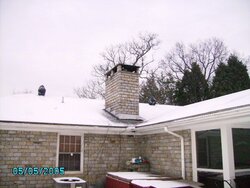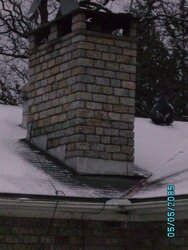I know it's been discussed here before, but the new search function doesn't appear to like me well.
When comparing the output of a stove to the same model configured as an insert, is there a rule of thumb as to what percentage of heat will lost to the hearth and chimney? I thought someone said 30% losses on an insert. I know the manufacturers give the rating based on the stove model not the insert.
Here's what I have; a PE Summit Insert in a cinder block chimney with one of the old heatilators as the fireplace. I have a metal block off plate that's sealed but no rock wool insulation.
Chimneysweeponline.com rates it as 48,392 btu over an 8 hour burn. They rate the Summit stove the same too. Is it reasonable to think I'm loosing 30% or 14,517 but because it's an insert?
I have this crazy idea that I want to do some weatherization projects to cut my heat load by 5100 btu. That's what a standard electric heater puts out. I quickly realized that the biggest gains might be made by lining the fireplace with rock wool to loose less heat that I'm already producing. If I can get this amount of savings, that's 3/4 cord less wood burnt over the four coldest months of the year.
Has anybody burnt an insert for a year or two and then added rock wool and seen a big difference?
When comparing the output of a stove to the same model configured as an insert, is there a rule of thumb as to what percentage of heat will lost to the hearth and chimney? I thought someone said 30% losses on an insert. I know the manufacturers give the rating based on the stove model not the insert.
Here's what I have; a PE Summit Insert in a cinder block chimney with one of the old heatilators as the fireplace. I have a metal block off plate that's sealed but no rock wool insulation.
Chimneysweeponline.com rates it as 48,392 btu over an 8 hour burn. They rate the Summit stove the same too. Is it reasonable to think I'm loosing 30% or 14,517 but because it's an insert?
I have this crazy idea that I want to do some weatherization projects to cut my heat load by 5100 btu. That's what a standard electric heater puts out. I quickly realized that the biggest gains might be made by lining the fireplace with rock wool to loose less heat that I'm already producing. If I can get this amount of savings, that's 3/4 cord less wood burnt over the four coldest months of the year.
Has anybody burnt an insert for a year or two and then added rock wool and seen a big difference?



